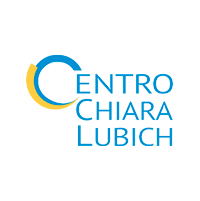Sanctify ourselves the way we are
Like monks
So the Church wants its members to become saints, separate and reagents on the world through integral Christianity. Chrysostom said to the Antioch people that he wanted them to be monks, except for celibacy, and also another monk, Savonarola. said the same to the Florentines… Substantially, St. Catherine of Siena taught the same monastic ideal by inculcating in all, also the laity, to retreat into the cells of self knowledge, digging out amid business affairs, arms and noise, a refuge in which to recompose one’s integrity.
Igino Giordani, Sign of contradiction, New City, Rome, 1964, p. 254-255
The Church
The Church is a live body: we cannot be dead members. And instead, the biggest damage arises from the external persecutors, but those who are floppy inside, like the vile, indifferent and tepid people.
Igino Giordani, We and the Church, A.V.E. ed., 1939, p. 65
Laity and the Church
Clergy and laity: a dual value, that must be distinct in order to unite. Their redemptive force lies in cooperation… Catherine made us see that those walls raised between clergy and laity, between consecrated and married people, are made up of fogs, which a gust of wind disperses, discovering that we are a sole family, one community, of the exclusive body of the Mystical Christ. The functions differ, just like the various vocations, but this diversity is not a division but rather, protects unity with the fundamental equality for which we are children of a sole Father.
Igino Giordani, «New Humanity » n.210, November – December 2013, p.640
Saint Catherine’s method
With the method of St. Catherine, the laity had to sanctify themselves as they were: whether married, sovereigns or subjects, poor or rich, beautiful or ugly, men or women, young or old… The civil or social status did not matter: but on the other hand becomes raw material, the ordinary means of perfectioning oneself… Sanctity which she demanded from all, came about with a process common to all: that is, dying to oneself, renouncing all, and chiseling oneself to the model of the Crucified Christ. … The collective benefit of such a practice was the demolition of one’s Ego and community life that broke down that individualism which, in the following centuries would have become the destructive virus of social life.
Igino Giordani, «New Humanity» cit., p.640
The Third Order of the Dominicans
We have to achieve among us, that unity Jesus left us in his testament. United in his name, Christ is in our midst and with Christ in our midst we build living Churches in the world, in the polar expanse of technicalities, materialism and indifference.…..Each Dominican fraternity thus becomes a cell, which does not distribute hatred, but love, donates God who is Life … The Third Order has to become an Order, that is, a community. And a community presupposes communion – a communion of spiritual and earthly goods, with a hierarchy, a law and a discipline. What does this entail? That among brothers – if they are such – there is an obligation of solidarity and communion. Concretely, putting an end to the actual rapport, for many, can be performed in the monthly meeting, after which each one goes his own way, every tertiary has to educate himself and make himself one with every brother.
Igino Giordani, «New Humanity» cit., p.638




